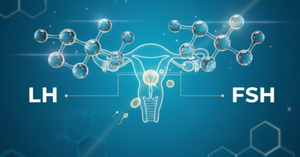“Let food be thy medicine and medicine be thy food.” — Hippocrates
Every woman knows how draining premenstrual syndrome (PMS) can feel. For some, it’s just mild mood swings; for others, it’s a mix of cramps, headaches, fatigue, bloating, and irritability. What often goes unnoticed is that inflammation plays a quiet but strong role behind these symptoms.
Medical research, including studies published in PubMed Central and health advice from the NHS, shows that diet can influence inflammation levels in the body. By choosing the right foods, especially anti-inflammatory ones, it’s possible to reduce discomfort, stabilize mood, and feel lighter through the menstrual cycle.
When your period is approaching, your body produces more prostaglandins hormone-like chemicals that help the uterus contract and shed its lining. However, high levels of prostaglandins can trigger pain, cramps, and mood changes. These substances are also linked to inflammation, which is your body’s way of responding to stress or imbalance.
Inflammation itself isn’t always bad, it's a part of healing. But when it stays high due to processed foods, sugar, stress, or lack of sleep, it worsens PMS. NHS health guidelines recommend maintaining a balanced diet with fruits, vegetables, and whole grains to help control inflammation naturally.
An anti-inflammatory eating pattern is not a strict “diet” — it’s a way of choosing foods that calm your body rather than irritate it. Think colorful vegetables, healthy fats, whole grains, and clean proteins. Avoid excess sugar, refined carbs, and trans fats that trigger bloating and mood dips.
Here’s how it can look in everyday meals:
Fish such as salmon, mackerel, and sardines are rich in omega-3 fatty acids, which have natural anti-inflammatory effects. According to PubMed studies, omega-3s lower prostaglandin levels, helping reduce cramps and menstrual pain. For vegetarians, walnuts, flaxseeds, and chia seeds are excellent plant-based options.
The deeper the color, the richer the antioxidants. Berries, pomegranates, spinach, beetroot, and bell peppers help neutralize free radicals that contribute to inflammation. NHS nutrition guidelines encourage at least five portions of fruit and vegetables daily to reduce the risk of chronic inflammation and fatigue.
Unlike white rice or maida, whole grains such as oats, quinoa, and brown rice release energy slowly and maintain blood sugar balance. This prevents mood swings and energy crashes that often come with PMS.
Leafy greens like spinach, kale, and methi leaves are high in magnesium and calcium — two nutrients that help relax muscles and reduce cramps. They also contain vitamin E, which lowers inflammation and supports hormonal balance.
Almonds, sunflower seeds, and flaxseeds are powerhouses of vitamin E, healthy fats, and zinc. These nutrients improve skin health, calm inflammation, and ease breast tenderness.
Healthy fats from olive oil and avocados act like natural lubricants for the body. They reduce oxidative stress, help absorb fat-soluble vitamins, and support mood regulation.
Green tea is rich in catechins plant compounds that reduce inflammation. Herbal teas like chamomile and ginger soothe the stomach and reduce bloating, making them perfect for PMS days.
While adding good foods is important, avoiding certain items matters equally. Some foods can raise inflammation and make symptoms stronger.
Reducing these foods during the luteal phase (the 10–14 days before menstruation) helps the body stay calmer and reduces pain intensity.
When you don’t have much time or energy, these simple meals can keep inflammation low and nutrition high:
Morning: Warm oats topped with berries, banana slices, and a spoon of flaxseed powder.
Midday: A bowl of khichdi with ghee, spinach, and carrots. Add a cup of buttermilk for probiotics.
Evening: Stir-fried tofu with brown rice and sautéed vegetables in olive oil.
Snack: Handful of walnuts or roasted chickpeas with green tea.
Before Bed: Turmeric milk with a pinch of cinnamon for natural relaxation.
All these meals include anti-inflammatory ingredients that are easy to digest and comforting during PMS.
Inflammation isn’t only about what you eat; it’s also about how your body processes it. Drinking enough water, about 2 to 2.5 liters daily as per NHS advice, supports liver function, flushes toxins, and keeps your digestive system active.
Adding herbal infusions like fennel or mint tea can also help manage bloating and reduce fluid retention, which are common PMS complaints.
These habits, when paired with the right foods, can naturally decrease the severity of PMS over time.
If you experience severe pain, mood swings, or fatigue that interfere with daily life, it’s best to consult a healthcare provider. Sometimes, conditions like endometriosis or hormonal imbalances mimic PMS but require medical treatment. The NHS recommends keeping a symptom diary to track patterns and share them with your doctor.
Inflammation may sound like a medical term, but it’s actually at the root of many PMS troubles from cramps to fatigue. Choosing anti-inflammatory foods is a gentle and powerful way to support your menstrual health.
When your plate is colorful, balanced, and fresh, your cycle feels calmer, your energy stays steady, and your mood lifts naturally.
Small daily choices like switching refined sugar for fruit, or using olive oil instead of butter, add up. Over time, they not only reduce PMS discomfort but also improve your overall well-being.
About PeriodSakhi
PeriodSakhi is your trusted companion for understanding your menstrual health. With easy-to-use tools, it helps you track your periods, ovulation, fertility, moods, and symptoms, while providing insights into your overall reproductive and hormonal health. PeriodSakhi also serves as a supportive online community where women can share experiences, find reliable information, and access expert-backed guidance on menstrual health, PCOS, pregnancy, lifestyle, and more.
Disclaimer
The views, thoughts, and opinions expressed in this article/blog are solely those of the author and do not necessarily reflect the views of PeriodSakhi. Any omissions, errors, or inaccuracies are the responsibility of the author. PeriodSakhi assumes no liability or responsibility for any content presented. Always consult a qualified medical professional for specific advice related to menstrual health, fertility, pregnancy, or related conditions.
Start the conversation
No comments yet. Start the conversation by leaving the first comment!





